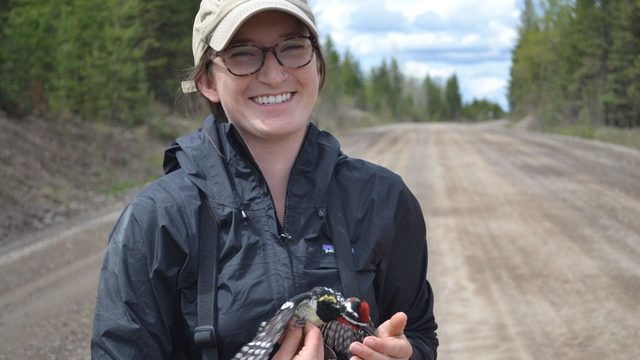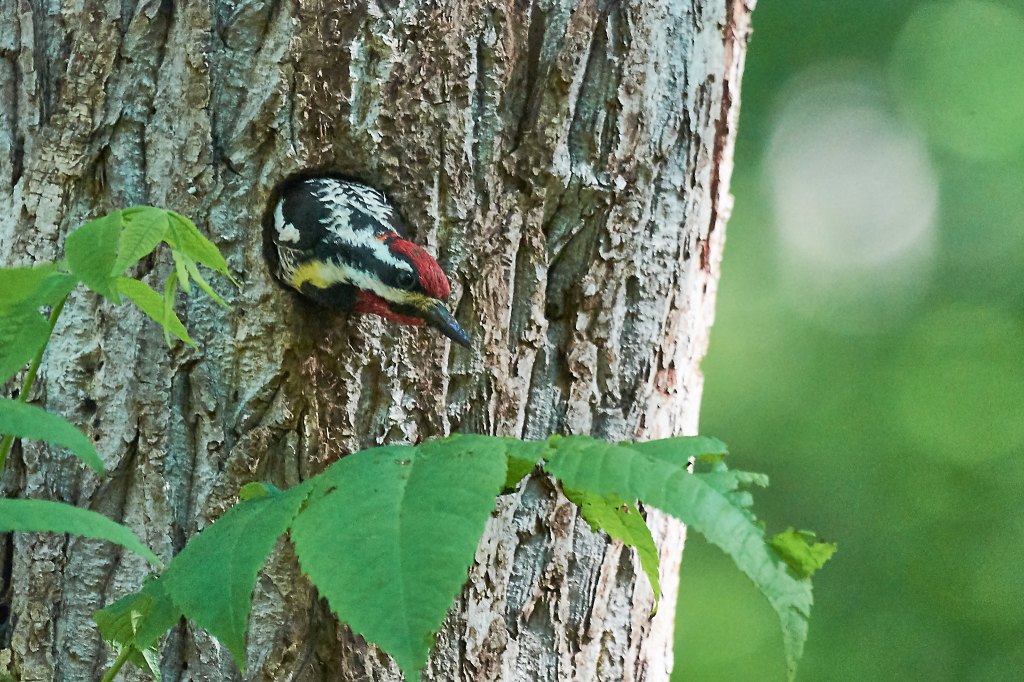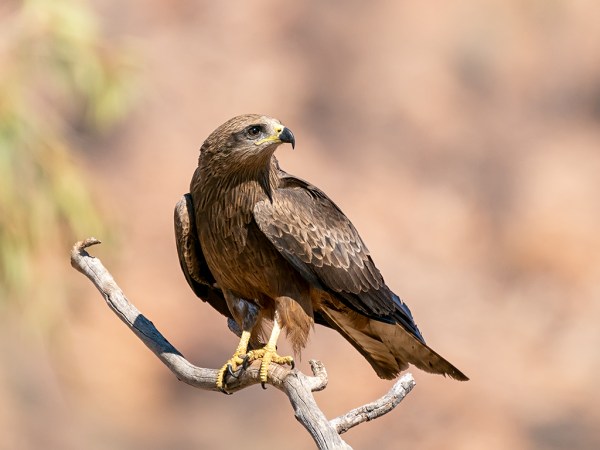Considered a “double keystone species,” all species of woodpeckers are truly ecosystem engineers. Woodpeckers will excavate cavities in trees to raise their nestlings. Over time, these activities can then be used by other species of birds such as bluebirds and swallows. They can even be used by squirrels.
The yellow-bellied sapsucker (Sphyrapicus varius), a species of woodpecker found across Canada, eastern Alaska, and the northeastern United States, takes its ecosystem engineering job a step further. This species will drill a network of little holes called “sapwells” into the bark of trees, where sugar-rich sap wells up from the trees vasculature, which they then drink. In addition, many other species of insects, birds, and mammals will also feed on the sweet tree sap, making the sapsucker a top candidate in assisting the ecosystem.
I covered this visible aspect of sapsucker natural history in a previous blog. But this woodpecker has a lot more to offer a curious naturalist. Libby Natola, a PhD Candidate in the Department of Zoology at University of British Columbia, is the ultimate sapsucker scientist. She is a font of knowledge on this very important, and very quirky, species.
“I study the evolutionary history of yellow-bellied sapsuckers and their close relatives, the red-naped and red-breasted sapsuckers,” explains Natola. “While these are considered separate species due to their unique breeding ranges, ecology, and appearances, they are all known to mate with each other (hybridize) where their breeding ranges overlap. However, we don’t fully understand what caused them to become separate species in the first place or how their populations and gene pools behave when they hybridize.”

Using intensive field and genomic methods, Natola is carrying out her research to determine what parts of their genomes are different, what genes are passed from one species to another when they interbreed, and what are the genetic, ecological, or behavioral barriers affecting who breeds with whom?
Having extensive knowledge of yellow-bellied sapsuckers, Natola has grown fond of the species and shares her interesting facts with anyone who is curious. For example, you may not know that although this species is quite small, they are in fact, pretty bold!
Yellow-Bellied Sapsuckers: Did You Know?
“The name “yellow-bellied sapsucker” makes them sound like a cowardly character from the three stooges,” jokes Natola, “but they’re actually pretty aggressive. They’re thought to be so aggressive that they’re outcompeting the substantially bigger red-breasted sapsucker and pushing it out of its historical breeding range. They can also be aggressive to humans who study them. I know from personal observation.”
This bold and aggressive tactic, however, seems to make them very suitable and dependable parents.
“They’re very modern parents,” she notes. “The males do just as much work (if not more) building the nest, incubating the eggs, brooding nestlings, and feeding the nestlings and fledglings as the females. In fact, some research suggests the nest can survive if the female dies, but if the male dies, the nest will fail. Excellent examples of co-parenting.”
In terms of migration, yellow-bellied sapsuckers are some of the only migratory woodpeckers. It’s thought that while most woodpeckers can get by on insects and other invertebrates throughout the winter up north, the sapsuckers are so dependent on sap that when the trees freeze up and sap becomes inaccessible, the sapsuckers have to leave. They will then fly all the way to the Caribbean and Central America for the non-breeding season.
When it comes to a woodpecker’s drum, they use this in the same way passerines use songs: to advertise themselves and their territories to potential mates, and to let other males know that territory is occupied.
“They’re sometimes called morse code birds because they have a very rhythmic tapping drum instead of a rolling drum like most other woodpeckers,” notes Natola. “It makes them very easy to pick out at a distance in the forest.”
If you have one hammering on your gutter or satellite dish, it is not that the bird is foraging, and the structural integrity of your house is fine. The metal makes the drum louder and more resonant, so it’s like they’ve found a megaphone.
“Think of it as nature’s equivalent to John Cusack with a boom box over his head,” she says, referring to the iconic scene in the 80s move Say Anything.
How to Support Your Local Sapsucker
Although the yellow-bellied sapsucker is not of conservation concern, Natola still provides us ways in which we can help sapsuckers, as well as many other bird species, when it comes to their conservation needs.
“Like most birds, I’d say their biggest threats are windows and cats. To help yellow-bellied sapsuckers, put decals on your windows, petition for legislation for bird-safe infrastructure, and for the love of birds keep Mittens inside!”
I thank Natola for sharing her love for yellow-bellied sapsuckers, and I hope she continues to share her passion for them through her research and knowledge.
“I am a sucker for sapsuckers. Yes, I’ve been using that corny line since I started my Masters, and no, I will never stop,” she says.




I live in Mobile, Al, & have many camellia trees. I have been having a patio built near one & so it was pruned more than usual.
We have noticed this tiny bird spending the days pecking on the trunks.
A few days ago I went to examine the branches more carefully & many rows of holes on many sections of the trunks.
I put a picture of the damaged spots on a camellia FB page & got a response saying it had been a sapsucker & could kill my tree.
They advised I should cover the trunks with burlap for a month or so to let it heal.
Do you have any advice on this?